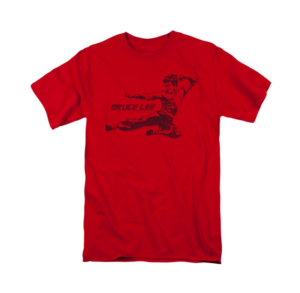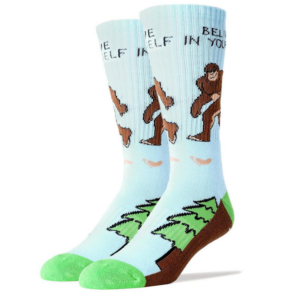Bruce Lee and Jeet Kune Do
Bruce Lee designed his famous Jeet Kune Do martial art as more a philosophy or set of guiding principles than an actual system. To understand what he was doing and why, you have to understand how he thought about martial arts and his philosophy more generally.
 Bruce Lee thought that all thinking was ultimately a form of self-expression. Once you got rid of all the patterns, all of the frameworks, you were left with nothing but “yourself.” For example, if you begin by learning certain martial arts techniques, and then begin to modify them to make them easier to use, then you will eventually create something that is unique to you. If you follow the path of most efficiency long enough, then the martial arts you practice will eventually come to reflect your own specific, unique physical style. Thus, the best martial artist always practices a totally unique art.
Bruce Lee thought that all thinking was ultimately a form of self-expression. Once you got rid of all the patterns, all of the frameworks, you were left with nothing but “yourself.” For example, if you begin by learning certain martial arts techniques, and then begin to modify them to make them easier to use, then you will eventually create something that is unique to you. If you follow the path of most efficiency long enough, then the martial arts you practice will eventually come to reflect your own specific, unique physical style. Thus, the best martial artist always practices a totally unique art.
One of his favorite metaphors was that of water. Water, being a liquid, always takes on the shape of the vessel into which it is poured. If you pour water into a kettle, the water takes on the shape of the kettle. If you pour water into a vase, then the water takes on the shape of the vase. If you pour water into a glass, then the water takes on the shape of the glass. In every case, the water takes on the shape of the vessel into which it is poured. This metaphor applies both to the martial artist himself and to his art. The martial artist is like water in that he adapts seamlessly to each new situation by effortlessly fulfilling the new demands. In a real-life street defense situation, the martial artist would use improvised weapons or hide behind obstacles in a totally fluid and adaptable manner. Additionally, Jeet Kune Do itself adapts to the body of the martial artist, who makes the art his own by modifying techniques and improvising until he has developed his own personalized version of the martial art.
While it does not have techniques or patterns, however, Jeet Kune Do does have “guiding principles” that can be used to achieve better results. The highest kind of attack in Jeet Kune Do is known as a stop hit, or an attack that intercepts the opponent before they can land a blow. The idea is that, when an opponent goes to attack you, they will always give away or telegraph their attack, and this provides you an opportunity to intercept them. This same idea of interception is used both in the form of kung fu known as Wing Chun, and also in certain kinds of Western fencing.
The second highest kind of attack in Jeet Kune Do is to block an attack and counter at the same time. This technique is also used in the Israeli martial art, Krav Maga, where it is known as “bursting.” The very lowest kind of attack in Jeet Kune Do is to block or slip the opponent’s attack, and then counterattack in sequence. So Jeet Kune Do, which literally means “intercepting fist”, is based on the principle of having the upper hand at all times, by ranking attacks in a certain way.
Bruce Lee And Bodybuilding
 Bruce Lee is renowned as a martial artist. But one thing that a lot of people don’t know is how admired he is by professional bodybuilders. Despite being small and thin, weighing in at only about 140lbs for most of his life, Bruce Lee is well-known to bodybuilders as one of the most defined physiques to have ever been displayed by a celebrity. Joe Weider, the founder of the Mr. Olympia bodybuilding competition, described Bruce Lee as having “The most defined body I’ve ever seen!” Additionally, many professional bodybuilders have cited Bruce Lee as an influence. There’s a reason that his legacy extends beyond kung fu movies, and there’s a reason that people still wear Bruce Lee t shirts today.
Bruce Lee is renowned as a martial artist. But one thing that a lot of people don’t know is how admired he is by professional bodybuilders. Despite being small and thin, weighing in at only about 140lbs for most of his life, Bruce Lee is well-known to bodybuilders as one of the most defined physiques to have ever been displayed by a celebrity. Joe Weider, the founder of the Mr. Olympia bodybuilding competition, described Bruce Lee as having “The most defined body I’ve ever seen!” Additionally, many professional bodybuilders have cited Bruce Lee as an influence. There’s a reason that his legacy extends beyond kung fu movies, and there’s a reason that people still wear Bruce Lee t shirts today.
Bruce Lee was known for emphasizing physical fitness. He thought that most martial artists were too focused on developing technique. While he did value the technical side of martial arts, Lee felt that a martial artist, to be roundly effective, should focus on training their bodies as much as their technique. He was known for being extraordinarily fit and even had several exercise machines designed and built to his own custom specifications. He was a very accomplished athlete and had very specific training goals that could only be met by custom machines.
While the film Enter The Dragon was being created, Bruce Lee was choreographing some fight scenes. He did this live on set. The director’s wife, Ann Clouse, was observing Lee and admiring his physique (he was shirtless at the time). Eventually, she approached him between takes and asked to feel his bicep. When he allowed her to do so, she exclaimed, “It’s like feeling warm marble!”
Bruce Lee was not, however, a person with a bodybuilding ethic. While bodybuilders admired him greatly, bodybuilders are people who build muscle primarily for show. Bruce Lee didn’t build muscle for show. Instead, he built muscle for function. His goals were speed, strength, flexibility, and the ability to fight. He wasn’t interested in just looking good. In fact, he wasn’t interested in looks at all!
Take a moment to appreciate that. Bruce Lee’s physique was basically a byproduct of his training process. He was first and foremost an athlete who was interested in fitness. And yet, bodybuilders, whose entire careers revolve around making their bodies look good, are impressed with his appearance. That means that Lee’s dedication to athleticism was so great that he could build a bodybuilder-esque physique from sheer athleticism. Bodybuilders build themselves to look good, but Bruce Lee looked better than any bodybuilder just through athletic training. Bruce Lee was a freak athlete and one of the most physically gifted people to ever live.
Top Jim Carrey Movies
Who doesn’t love Jim Carrey? Well beloved for decades and one of the most famous and iconic actors of the past 50 years, Jim Carrey was the face of American comic cinema throughout the 90s and 2000s. A master of physical comedy and improvisation, Carrey didn’t just play roles; he was the lynch pin and central element of nearly every movie he starred in. Having been a fixture of American comedy for some time, it’s no surprise that you still see him on the occasional Ace Ventura movie t shirt. Here’s a list of some of his best films:
 5 Ace Ventura
5 Ace Ventura
Ace Ventura was one of Carrey’s earlier films, and it shows. There is a general trend in his movies where they become less and less wacky and goofy and more introspective and thoughtful as time goes by. Belonging to his earlier period, Ace Ventura gives Carrey a lot of room to improvise and do silly impressions, and is overall typical of 90s comedy in its lightheartedness and farcical nature.
4 Dumb and Dumber
Much like Ace Ventura, Dumb And Dumber is a typical 90s comedy. We see Carrey taking up what came to be his prototypical role in the 90s: a happy go lucky dolt whose entire existence consists of misadventures. While Dumb And Dumber is not exactly a critic’s idea of a cinematic masterpiece, it’s still an endlessly entertaining movie decades later.
3 Liar Liar
One can see Liar Liar as the beginning of the trend where Jim Carrey movies stopped being pure silliness and began to trend toward thoughtfulness and high-concept film. Liar Liar is a movie about a little boy that makes a wish that, for one day, his dad can’t lie. This quickly becomes a problem, because dad is a lawyer and needs to lie constantly to keep his job. What follows is hilarious, but also a sad commentary on how dishonest people are every day. This comes home when Carrey’s character says the line: “Adults need to lie.”
2 The Grinch
The Grinch holds a special place on this list because it’s a remake of an animated favorite. Jim Carrey’s Grinch is just as cantankerous and curmudgeonly as the old cartoon Grinch. However, Carrey brings his own unique twist to the character. His unique brand of physical comedy brings a new dimension to an old favorite. Like Liar Liar, The Grinch also show’s Carrey’s trend toward more thoughtful film making and acting. The message of the original Grinch cartoon carries through in his newer, “inspirational” style.’
1 Bruce Almighty
Bruce Almighty was Jim Carrey’s highest-grossing film and might just have been his best. Released in 2003, it grossed $485 million. It is also the movie that takes place at the apex of Carrey’s high concept phase. In it, God, played by Morgan Freeman, offers Carrey’s character, Bruce, a chance to be God for a while. The film has some interesting ideas about religion and morality, and questions whether it would be a good thing if everybody ultimately just got whatever they wanted. Of all of his movies, this is perhaps the best one.
Gigantopithecus
Gigantopithecus was an enormous pre-historic ape. In fact, it’s the largest primate anywhere in the fossil record! Standing anywhere from nine to twelve feet tall, gigantopithecus was a force to be reckoned with. Whenever you see someone wearing a Bigfoot t shirt, or perhaps Bigfoot socks, you’re looking at a creature that may very well have been inspired by gigantopithecus.
Gigantopithecus is known from a few fossil remains. We have teeth and mandibles from the creature. Although we only have the teeth and part of the skull, advances in biology allow scientists to infer a great deal about what the creature must have been like. Techniques often involve taking similar, closely-related creatures, such as orangutans in the case of gigantopithecus, and inferring the proportions of the extinct animal based on what we know of modern-day relatives of that animal.
 Gigantopithecus would stand between nine and twelve feet tall if it were similar to a modern-day orangutan, which is its closest relative. Fossil evidence suggests a great degree of dimorphism in the species: males were larger than females, by far. The teeth that we have suggest that gigantopithecus ate plant matter primarily, because it has many molars for chewing plants. Also, because the upper canines (the fangs) do not protrude very far, it is likely that gigantopithecus did not intimidate others of its species by displaying its teeth. This is in contrast to animals like gorillas, which can display their long fangs in order to frighten other gorillas.
Gigantopithecus would stand between nine and twelve feet tall if it were similar to a modern-day orangutan, which is its closest relative. Fossil evidence suggests a great degree of dimorphism in the species: males were larger than females, by far. The teeth that we have suggest that gigantopithecus ate plant matter primarily, because it has many molars for chewing plants. Also, because the upper canines (the fangs) do not protrude very far, it is likely that gigantopithecus did not intimidate others of its species by displaying its teeth. This is in contrast to animals like gorillas, which can display their long fangs in order to frighten other gorillas.
This leaves us with an interesting finding: since the males were larger than the females, we know that there was a lot of fighting between males, possibly over mates. Generally, in species where the males are bigger and stronger by far, the males compete with one another a lot, and that’s the evolutionary drive behind them becoming bigger than the females. Second, we know that they did not intimidate one another by showing their teeth. This is interesting because it suggests that gigantopithecus did, indeed, compete with others of its own kind, but did not do so using its teeth. This means that it probably had some other threat display. It could, for example, have flared out its shoulders to look bigger, stamped the ground, thrown grass, or used other primate threat poses.
Some people have identified gigantopithecus as bigfoot himself! Most cryptozoologists are amateurs or people working outside of the academy. However, there was a professional, tenured anthropologist who believed in bigfoot and thought that gigantopithecus might be bigfoot. His name was Grover Krantz. Many people in his field thought that he was a crackpot, and a lot of his work was denied by various scholarly journals by other academics who thought it was just crankery. However, Krantz himself never apologized for his belief in bigfoot and continuously tried to prove its existence. Krantz theorized that gigantopithecus (bigfoot) would have crossed the Bering Land Bridge when it still existed.
Most astounding of all, Krantz was, at one point, a skeptic! He began by thinking that bigfoot was probably not real, and gave the creature a 10% chance of existing. Later on, he became convinced that Sasquatch was actually real.
A Christmas Story
A Christmas Story is one of those movies that has become a fixture of American culture in ways that you can notice even if you’ve never seen the film. Various characters and scenes from the movie have found their way onto “A Christmas Story” t shirts, among other kinds of merchandise. Let me tell you a little story.
 Once upon a time, it was around Christmas and I was walking to the gas station. I forget exactly what I was after. It may have been eggnog because I was feeling festive. It may have been cigarettes, because I still smoked back then. It may have just been snacks, a protein bar or shake. I don’t remember if I was lifting weights at the time, but it might have been a protein bar I was after. This was when I lived in a sleepy mid-sized Midwestern city.
Once upon a time, it was around Christmas and I was walking to the gas station. I forget exactly what I was after. It may have been eggnog because I was feeling festive. It may have been cigarettes, because I still smoked back then. It may have just been snacks, a protein bar or shake. I don’t remember if I was lifting weights at the time, but it might have been a protein bar I was after. This was when I lived in a sleepy mid-sized Midwestern city.
I usually walked to the gas station because I didn’t like to drive when I could walk. I had a car. I’m just a person who walks everywhere. Especially after I’ve moved to a new place, I feel that it’s better to walk everywhere than it is to drive. When you drive, you’re insulated from the location. You don’t see much. When you walk, it forces you to get up close and personal with the new place you’re living in. And that is what makes all the difference in really making yourself at home in a new town. I had lived in that city for a few years by then, but I always took walks and tried to take a different route each time. I felt that it made the place more personal for me.
So there I was. It was a few days before Christmas. There was a lot of snow on the ground. It was the wet, crunchy snow that falls in that part of the world sometimes. Not light powdery stuff, oh no. This was heavy and deep. I was wearing a set of hiking boots and they were still leaking a little. It was a brutal winter. I lived in a suburb on the edge of town and there were streetlights all the way to the gas station. Their light was cold and blue. I was all bundled up in my scarf and gloves and ankle-length coat. I had a big beard back then and it had ice crystals in it.
As I walked to the gas station, I passed many houses. It was dark, but not too late in the evening, so a lot of them still had lighted windows. I paused at one of them because something perched in the window caught my eye: It was a lamp, shaped like a woman’s leg, with a lampshade on top. It’s the exact same lamp that the father receives in the mail in A Christmas Story! I smiled to myself and thought, “Well, I guess somebody won a major award…”
300: What Made It Work?
It has been a decade and a half since the release of 300. Released in 2006, the film was a blockbuster. Grossing over four hundred million dollars, the film was praised for its style, unique color palette, quotable dialogue, and over-the-top action and gore. Although the film was released fifteen years ago, people still quote it today and wear 300 t shirts. So I have to ask myself: what made 300 so good? Why is that movie a classic?
 A little background on me. I first saw this movie in 2006, when I was a teenager. I went to the theater in my small town with a friend and we sat in the back, ate some popcorn, and watched. I remember when, coming out of the theater, my friend was so pumped about it. He stood on the street corner and said, “Where do you guys wanna go eat? Because I was thinking that tonight, we could dine in hell!” He screamed that last part. I’m not the pubescent video-game-playing Red Bull-swilling kid I was then, but I vividly remember seeing 300 in the theater that night. It’s an experience I can’t forget.
A little background on me. I first saw this movie in 2006, when I was a teenager. I went to the theater in my small town with a friend and we sat in the back, ate some popcorn, and watched. I remember when, coming out of the theater, my friend was so pumped about it. He stood on the street corner and said, “Where do you guys wanna go eat? Because I was thinking that tonight, we could dine in hell!” He screamed that last part. I’m not the pubescent video-game-playing Red Bull-swilling kid I was then, but I vividly remember seeing 300 in the theater that night. It’s an experience I can’t forget.
And the unforgettableness of that movie really is what makes it a classic. But that, in turn, begs the question: what makes it unforgettable?
A few things. First, the movie is all about style more than substance. Or, to put a finer point on it, it’s style-as-substance. Who cares if it’s historically accurate or implausible? The point is the style. The whole movie is shot in a weird color scheme to make it look like a comic book, and this reinforces the surreal, mythological view of the whole thing. It doesn’t feel realistic. It doesn’t feel like real life at all. But it’s not supposed to! The whole point of 300 is to feel like some strange dream, the kind you have when you’ve got a high fever and just had a lot of cough syrup before bed. Everything in 300 is over the top and cartoonish, and that’s what makes it so delightfully archetypal.
The second aspect of 300 that makes it immortal (but not like a Persian Immortal!) is its quotability. Say any of the following to someone:
“Tonight, we dine in Hell!”
“Spartans, prepare for glory!”
“Madness? THIS IS SPARTA!”
Everyone knows those quotes. Everyone! Even people who have never seen the movie because they weren’t born when it came out know those quotes. They’re all over t shirts and memes and everything else. The quotable dialogue and unique style together make 300 an unforgettable film. Nobody can forget the over-the-top getup worn by Xerxes when he makes his first appearance, nor the sheer violence and gore. Add the agelessly quotable lines of dialogue ot that and you’ve got yourself a winner.
Game Review: Spider-Man & Venom: Separation Anxiety
Any good retro gamer is familiar with the beat ‘em up genre. A common fixture of arcade and console games in the 1990s, beat ‘em ups were the addictive game par excellence. If the local laundromat had an Altered Beast arcade machine, then you knew you’d better wash your clothes before using it. If you don’t, then you won’t be getting any laundry done, because your time and quarters will swiftly be eaten by the arcade. Beat ‘em ups are addictive because they are difficult. The basic premise is that you have a dozen lives or so, and your character walks through a stage beating up hordes of enemies with kicks, punches, and special moves. You will die quite frequently, and in the arcade versions, you get more lives by depositing quarters. There are generally different playable characters with unique special moves. Sometimes the basic punches and kicks are different, too.
Many superheroes and supervillains have made their appearances in beat ‘em up games. Thematically, the beat ‘em up is very suitable for use with superheroes because it involves one or two main characters fighting their way through hordes of mooks, which is exactly what superheroes are meant to do. And who better to serve as boss than a supervillain?
Enter Carnage. Everybody knows about Spiderman and Venom, and even people who aren’t total comic book geeks know who Carnage is. You might even have seen him on some Carnage t-shirts. In the 90s, there were two  popular beat ‘em ups featuring Carnage: Maximum Carnage, and Spiderman & Venom: Separation Anxiety. In both games, Carnage is the final boss.
popular beat ‘em ups featuring Carnage: Maximum Carnage, and Spiderman & Venom: Separation Anxiety. In both games, Carnage is the final boss.
Separation Anxiety is the more well-known of the two. Although the game is repetitive, with a lot of unavoidable hits that make it fiendishly difficult, nobody can deny that it’s entertaining. The plot has Spiderman and Venom teaming up against the nefarious Life Foundation to stop a horde of genetically-engineered symbiotes from running amok. After fighting your way through several levels full of goons, you fight a number of new symbiotes with names like Riot and Agony. At the very end, you face off against Carnage.
The controls are responsive and the game is considerably fun to play. There’s a wide variety of moves. You have the basic punch/kick combos, as well as the ability to climb on walls and drop down with an aerial attack. One of the game’s big positives is being able to play as Spiderman or Venom. Both characters have a shield that they can use. Spiderman’s is a web shield held close to his body. Venom, on the other hand, melds his hands together to create a shield from his symbiote suit.
If you can acquire Separation Anxiety in a compilation, or get the original cart, I strongly recommend it. It’s a good game and a lens into the state of console gaming in the 1990s.



